Contents
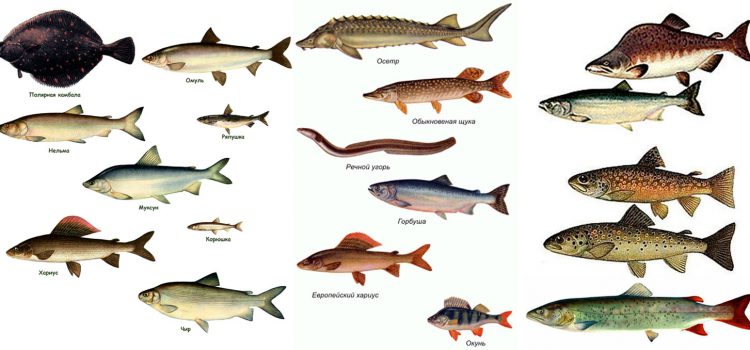
For many representatives of the strong half of humanity, fishing is a hobby, but not a means of profit. Although, quite recently, some 100 years ago, fishing was of no importance to many, as an occupation solely for pastime. For many, fishing was a means of survival.
Nowadays, most anglers come to a certain, interesting place to catch a rare but valuable specimen that can leave a memory for a lifetime. Siberia and the Far East are also visited by many lovers of fishing and catching tasty and valuable fish, especially since there are many types of fish and in sufficient quantities. In addition, the places attract anglers also by the fact that fishing here is mostly free.
Here, some sections differ in that it is really only possible to get here in winter. Unfortunately, there is nothing to do here alone, since the places are distinguished by harsh conditions, and you need to know the places. Therefore, it is better to buy some kind of voucher and go fishing with a whole team along with an escort.
Winter fishing competitions are regularly held on Lake Baikal. There are plenty of similar, interesting places in Siberia and the Far East, you just need to choose the right place.
Many anglers dream of fishing on Baikal, because grayling and omul are found here, as well as pike, ide, catfish, perch and other fish, both predatory and non-predatory. In addition, there are very picturesque and interesting places with wildlife.
Exact fish habitats in Siberia and the Far East
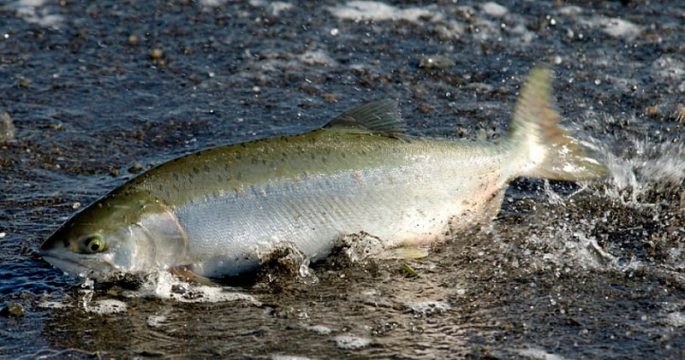
The reservoirs of Western Siberia are considered one of the richest in terms of the number of fish that live in them. The Ob River is also considered one of the richest in fish resources. It also includes its tributaries. In such rivers as the Yenisei, Tom, Amur, Yaya, Lena, Kia, Mris Su, Ters, Uryuk and others, there is a huge number of different types of fish.
The reservoirs of the Far East provide the largest variety of fish, which corresponds to more than 60% of all fish caught in Russia. The seas of the Far East replenish the commercial catch with cod and salmon, which are highly valued for their delicious meat. As a rule, they are caught in the Sea of Okhotsk, the Sea of Japan and the Bering Sea, which belong to the Pacific expanses.
The following types of fish are caught in the Far East:
- 40% herring.
- 100% crabs.
- 99% salmon.
- 90% flounder.
- 60% shellfish.
In other words, no less than 80% of all fish caught on an industrial scale throughout Russia is caught here. In addition to fish, there is fishing for algae, which is almost 90% of the mark, in general, in Russia.
Species of fish living in Siberia and the Far East
Grayling
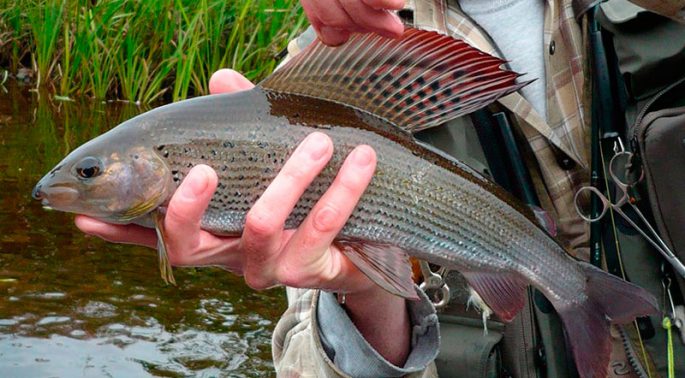
Grayling belongs to the salmon species of fish and is the most common species inhabiting water bodies located closer to the northern latitudes. The largest number of this fish is observed in the rivers of Siberia. He prefers rivers and lakes with clean water, while the water should be cold.
The most common individuals reach a weight of about 1 kilogram, although specimens weighing up to 3 kilograms come across. Despite this, a grayling weighing 6,8 kilograms was caught.
This fish is considered omnivorous, since the diet includes midges, grasshoppers, flies, algae, molluscs, and insect larvae. If he comes across caviar of other types of fish on his way, then he eats it.
Prefers to stay close to rifts, near huge stones, on thresholds, etc., where anglers with gear are waiting for him. Grayling is caught both on a regular float rod, and on spinning or fly fishing. In the case of using various spinners, small specimens should be preferred. If you take a larger bait, then you can catch larger fish, although in this case you will have to wait much longer for bites.
Fishing for Large Grayling and Pike in the taiga of Siberia. Lived 10 days Place Bear corner Snakes Ticks
Muksun
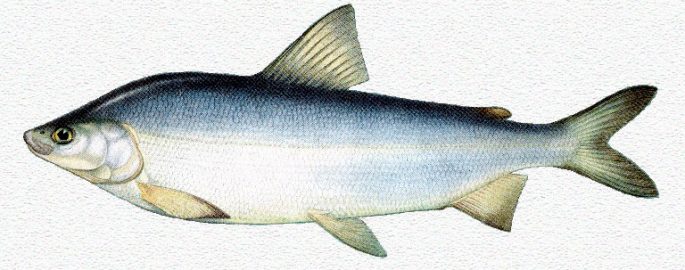
Belongs to the whitefish family, and is also a valuable industrial fish. This fish is found in any major river in Siberia. Fish is valued due to the presence of a sufficient amount of nutrients in the meat.
Muksun grows up to 75 cm in length and can gain weight up to 12 kilograms, although, mostly individuals come across, weighing no more than 2 kilograms. Despite this, fishermen catch specimens that are more catchy, weighing up to 7 kilograms. If a fisherman caught a fish weighing about 3 kilograms, then this is a great success for him. They catch this fish with nets if there is no ban, since in some regions there is still a ban.
This fish does not have to be caught with nets, as the muksun responds well to artificial baits such as flies.
Ulcer
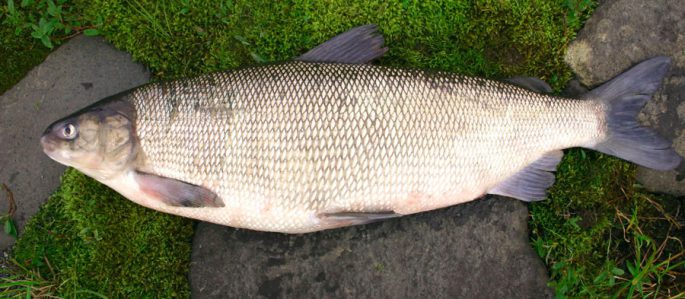
Another fish that represents whitefish. The largest populations of this fish are observed in the Ob and Yenisei rivers. Fish prefer fresh waters, although they can live and develop in semi-fresh waters. Chir is also found in Kamchatka. As a rule, individuals come across, no more than half a meter long and weighing no more than 3 kilograms. Despite this, a fish was caught, weighing about 11 kilograms, which grew in length to 84 centimeters.
Basically, this fish is caught with nets, but it bites perfectly on a fishing rod or spinning. As baits, you can take both living objects in the form of mollusks, insects and larvae, as well as artificial baits that imitate the movements of living objects in water. Edible rubber lures are very popular.
Ide
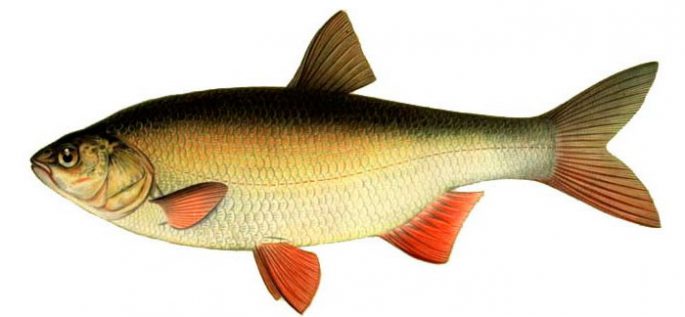
This fish is a prominent representative of the carp family, and has a huge distribution, both in Europe and in Siberia. The ide is considered an omnivorous fish, but prefers rivers or lakes with warmer water. Therefore, the main places where you can find an ide are ponds, lakes and rivers, but not in the mountains, where the water is cold and clear.
The ide grows in length up to half a meter, with a weight of about 3 kilograms, although individuals weighing up to 9 kilograms were found in some rivers of Siberia. The ide is caught on ordinary float gear or spinning rods equipped with artificial catch baits.
The most favorable time for catching it is the onset of darkness. It is also caught on ordinary worms.
Nelma

This fish is also a representative of whitefish, but the largest of them. It prefers rivers and river basins located closer to the Arctic Ocean, as well as water bodies of Siberia.
On average, individuals come across weighing about 10 kilograms, and nelma grows up to 50 kilograms. Differs in unsurpassed taste characteristics. Thanks to such taste data, this species is caught very intensively, therefore, in some regions of Siberia it is forbidden to catch it.
It is almost impossible to catch this fish on a spinning rod, so it is caught industrially.
Omul
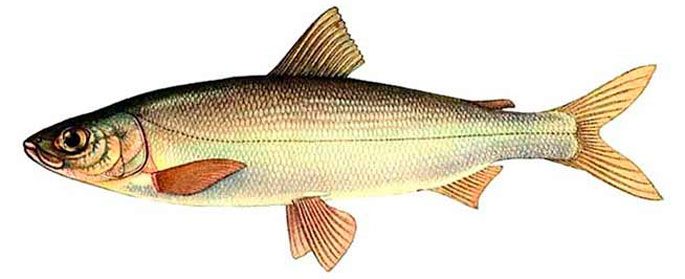
Another representative of whitefish, the largest populations of which are registered in Lake Baikal.
Omul grows to small sizes and can weigh no more than 8 kilograms. Omul is caught year-round, both from the shore and from the boat. He takes baits of small size, which are distinguished by bright colors. Quite often, he is caught on an ordinary fish, on meat or just on foam rubber. In winter, this fish can be found at a depth of up to 200 meters, which requires special gear. Therefore, winter omul fishing is fraught with serious difficulties.
Pyzhyan
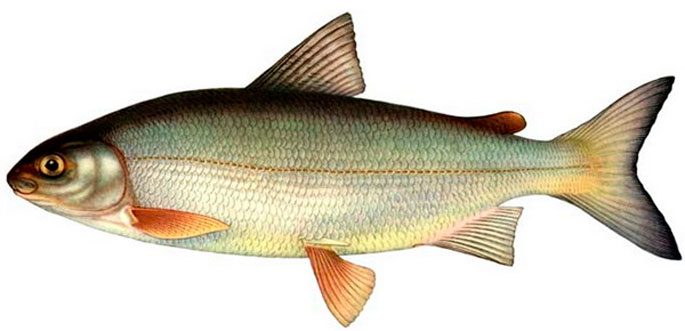
Pyzhyan is found in various reservoirs of Siberia. It grows in length up to 0,8 meters and can reach a weight of about 5 kilograms. This fish is caught on cast nets or seines. Recreational anglers use conventional tackle and lures. The diet of this fish includes insects and their larvae, as well as molluscs.
A relative

This fish prefers rivers that are located closer to the North. Most of all this fish is in such large rivers as the Lena, Yenisei, Ob, etc. Occasionally, but you can find specimens more than a meter long and weighing almost 100 kilograms. This fish is best caught in spring and summer with a net.
Lenok

This is a fish that belongs to the salmon species of fish, and which prefers freshwater reservoirs. Lenok is widespread in Siberia and the Far East. Prefers to stay on the rifts, as well as in mountain rivers. Lenok is considered an exclusively predatory fish that feeds on living organisms such as flies, molluscs, insects, worms, etc. Lenok is caught exclusively on spinning, using various spinners, wobblers or flies for effective fishing.
Taimen

This representative of salmon is listed in the Red Book. It is forbidden to catch taimen in almost all reservoirs. Likes to be in fresh, but cold water. He does not go to sea. It can grow up to 2 meters in length and weigh about 80 kilograms.
Pike

Pike is a predatory fish that inhabits almost all water bodies of Russia and Siberia, as well as the Far East is no exception. Here, individual specimens are not at all uncommon, weighing up to 35 kilograms and more than 1 meter long. Spring and autumn are considered the most productive periods for pike hunting. Pike is caught mainly on spinning, using various artificial lures.
Dace
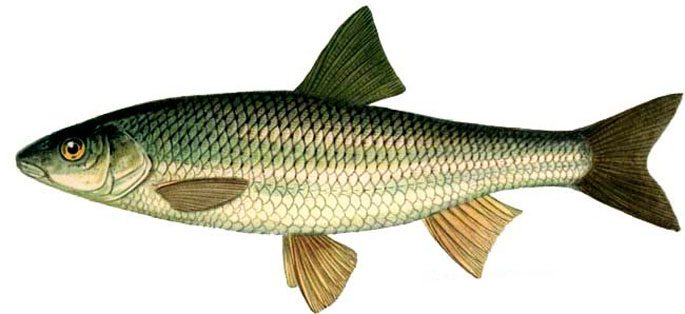
Yelets prefers reservoirs with flowing and crystal clear water. It is caught on ordinary float fishing rods. As a nozzle on the hook, you can take a worm, maggot, bloodworm, ordinary bread or cereal.
Burbot
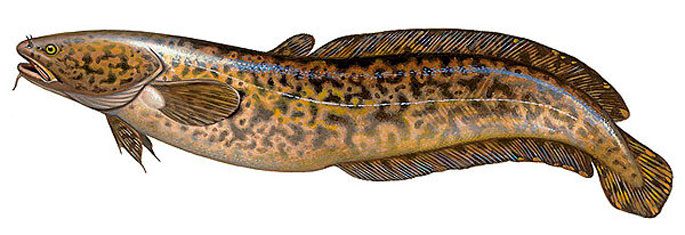
Burbot is the only cod-like species that prefers fresh water. It is most widespread in places that come close to the Arctic Ocean. In addition, it is found in almost all taiga zones. Mostly individuals weighing no more than 1 kg come across on the hook, although there are individual specimens weighing up to 25 kilograms.
Burbot is more active in cold periods, and it spawns exclusively in winter, in severe frosts. Since burbot also belongs to predatory fish species, it is better to catch it on animal nozzles.
Chukuchan common
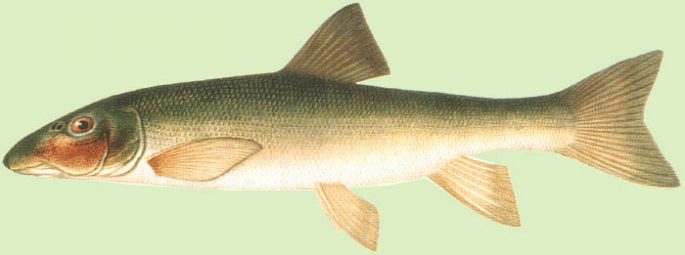
This is the only representative of the Chukuchanov family, which can be found in the reservoirs of Siberia and the Far East. Chukuchan is also a predatory fish and prefers baits of animal origin. Therefore, it is better to catch it on mollusks, worms, insects and their larvae.
Chebak
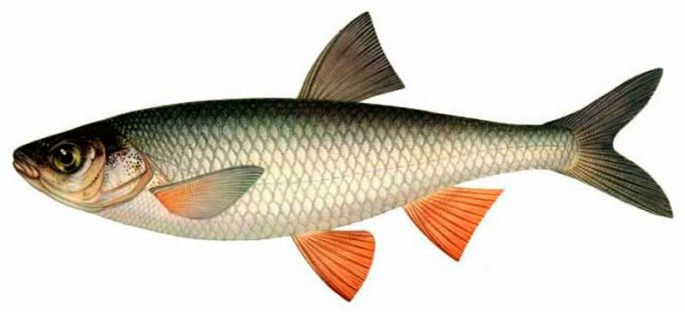
This is a member of the carp family. Distributed throughout Siberia and the Urals. Although the fish is not large, there are mostly individuals weighing about 3 kilograms. Chebak does not refuse either animal or plant food, therefore, it can be caught with any type of bait, but it is caught with an ordinary float fishing rod.
Fishing in Siberia and the Far East
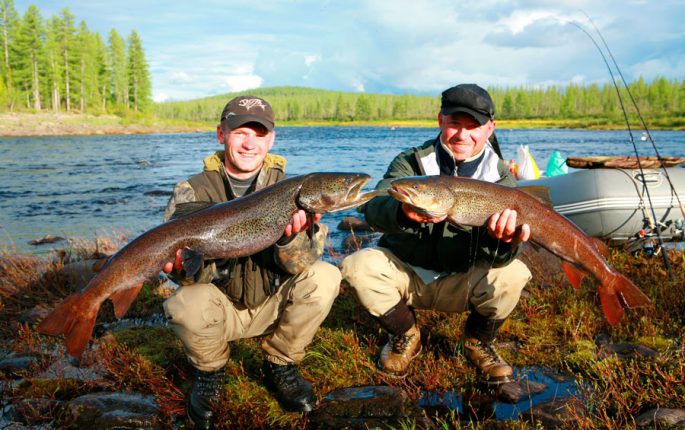
Features
The most important feature of fishing in these places is the dispersal of reservoirs over a large area, which is not so easy to get to without special transport. An equally important feature is the current bans on catching certain fish species that are listed in the Red Book. Therefore, fishing in Siberia and the Far East is fraught with some difficulties. In this regard, there is nothing to do here alone, especially without special permission.
Advantages
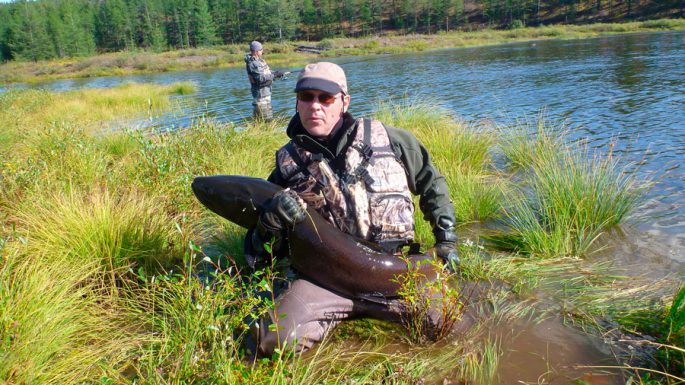
The advantage of fishing in these places is that there is just a huge number of fish species. Free fishing is allowed on most waters. Despite this, there are already sites where the territory is either privatized or leased. To get to such a territory for the sake of fishing, you will have to pay a large amount of money.
Fishing in the Far East is especially relevant in the autumn, when grayling is caught. During this period, a huge number of anglers come here.
fishing spots
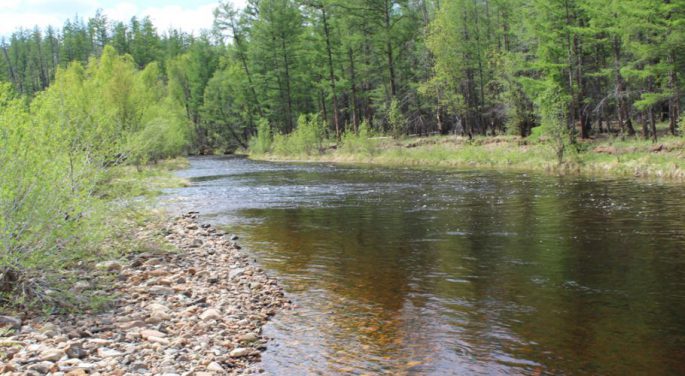
The most interesting place is the Ob River, as well as a pond in the immediate vicinity of the village of Razdolnoye. Here you can fish under a license with a limit on the number of fish caught. An equally interesting place is Lake Tennis.
No less interesting places await fishermen in the reservoirs of the Tomsk and Omsk regions. In the Far East, anglers choose the Sea of Japan and the Sea of Okhotsk, as well as the Gulf of Peter the Great, the tributaries of the Kolyma and the Indigirka. These places are considered one of the most interesting for fishing. Pollock, lenok, taimen, char, grayling and other types of fish are caught here.
In other words, Siberia and the Far East are a real paradise for anglers.
Fishing in Siberia. There is a carp.









